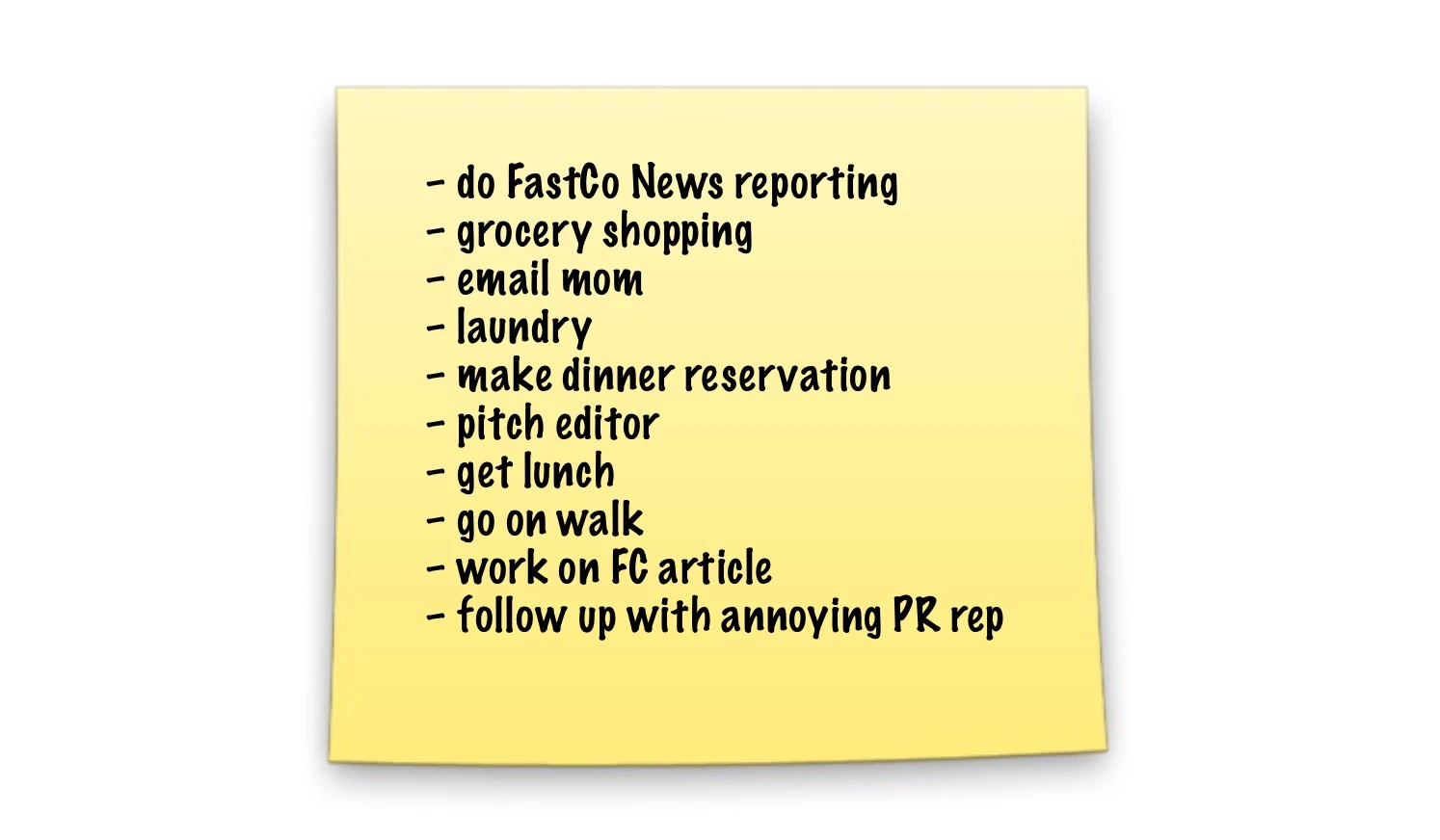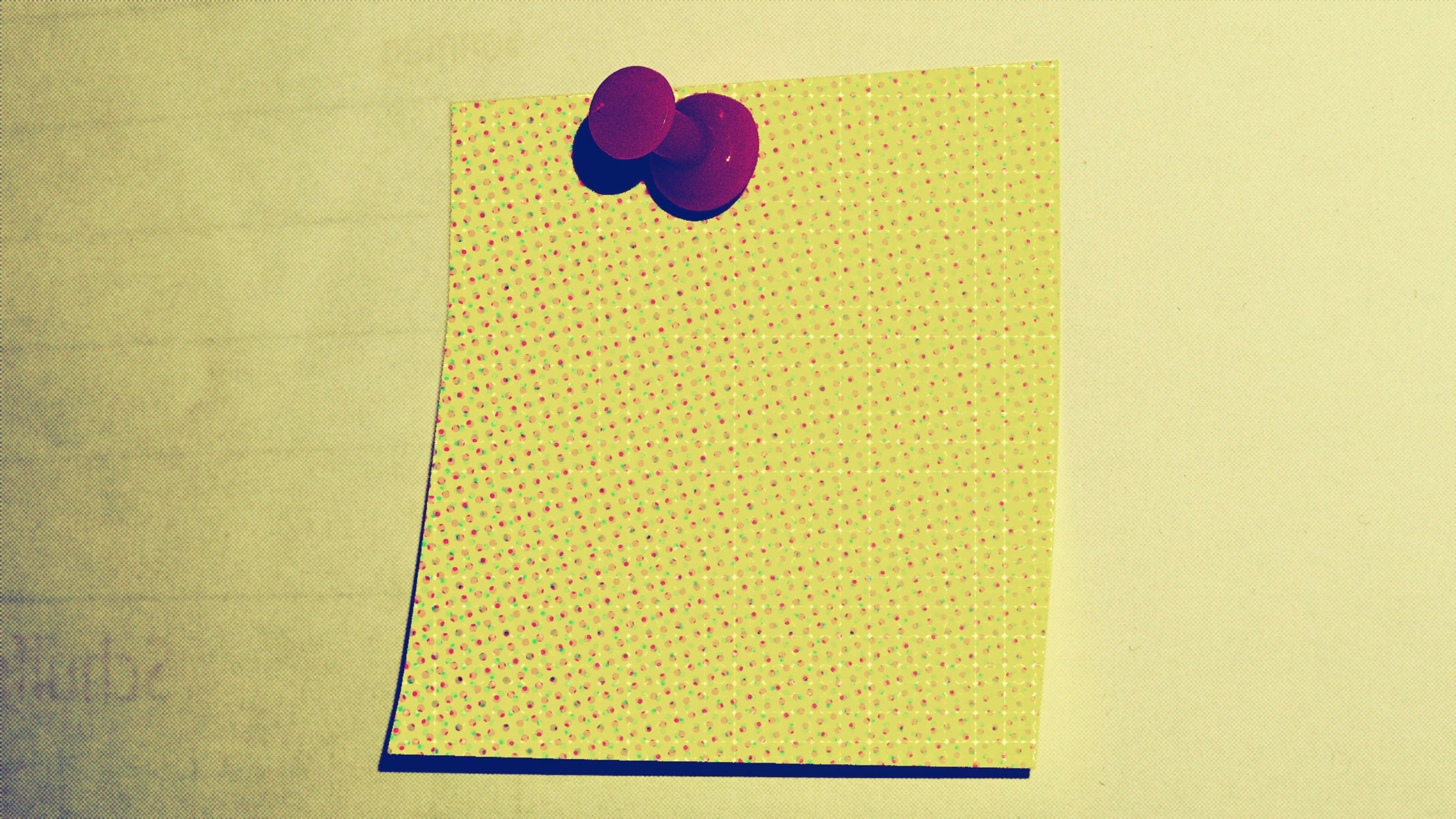I’m a big to-do list person. I’ve probably been making daily to-do lists on yellow Post-its for close to 15 years now. Every night before I go to bed I pen a bulleted list of all the things I need to accomplish the next day. However, inevitably, at the end of the next day I usually have a few items that aren’t scratched off the list. Those items get added to the top of tomorrow’s to-do. Yet the same thing happens the following day: I move a few uncompleted items to tomorrow’s list . . . and repeat the next day . . . and the next.
I rarely ever complete my to-do lists on the day I actually intend to. This invariably leads me to being a bit frustrated or even feeling a little overwhelmed at the end of the day. Surely I’m not the only one with this problem, so I looked for a solution for why my to-do lists were failing to get completed.
I read numerous articles about why to-do lists supposedly don’t work at all, why they work but I’m doing them wrong, and how to make them work. I tried various methods over the course of the week and found that no one article I read had the exact advice I needed to finish my daily to-do lists like a pro. But by using advice from various experts, I came up with a to-do list workflow that works for me. By the end of the week, I was completing everything on my to-do list every day. And I did it by making four simple changes to the way I to-do’d.
My To-Do List: Before And After
Below is what my daily to-do list generally looked like for the last 15 years.

And now here’s my new to-do list. This is the format and method I hit on about day five, and I’ve been able to complete all my daily lists every day since.

Some of the changes may be immediately noticeable, but let’s go through them all below.
1. Get Rid Of The Obvious
First things first: Stop writing down the obvious things you do on a daily basis. I’m talking about things such as “get lunch,” “cook dinner,” “shower,” etc. Adding tasks like these only serves to clutter up your to-do list and make you feel overwhelmed. For me, I stopped adding “get lunch” and “go on walk” to my to-do list. I can trust my body to alert me to when I’m hungry or when I need to get up and stretch my legs. There’s no reason to keep these things on your daily list.
2. Organize Tasks According To Digital Quickies, Work, And The Real World
The next step I took was organizing my daily to-do list into three simple sections. The first section I call “digital quickies.” These are very short tasks I can complete on my laptop or even my smartphone. The next section is “work.” These tasks are among the most critical for the day. Why aren’t they at the top of the list, then? I’ll get to that in the next step. The final section is “real world.” These tasks are things that can’t be done at work or digitally. They’re the errands you need to run in the real world.
3. Get The Least Time-Consuming Digital Tasks Done Within The First Hour After You Get Up
The great thing about digital tasks is they usually do not have to happen in real time (an email can be sent whenever, versus a phone call that requires two people to be available at the same time). I found many of the tasks I had scratched down on my daily to-dos were really digital quickies. They could be be taken care of in a few minutes each, yet seemed like much more immersive tasks because they were not organized together and completed all at once.
Now my digital quickies get taken care of within the first hour I’m up in the morning. This allows me to scratch off almost a third of my to-do list before my day has really begun. Psychologically this makes me feel like I’m accomplishing a lot, and it also lets me focus on the bigger tasks to be completed.
Found a pic from last month 🙂 pic.twitter.com/BOTtWUMbMI
— Hoobynoo™ (@HoobynooWorld) April 17, 2017
Those tasks fall under my new “work” section. These are the most important, time-consuming tasks I need to get done each day. For me, items in this section almost always involve tasks I’m paid to do. There’s another trick I learned to completing work tasks, which I’ll talk about in the last step.
The final section of my new to-do list layout is “real world.” Tasks listed here are any things I need to complete that aren’t related to work. These tasks as less important than my work ones since the only deadlines for completing them are my own, which is why the “real world” section goes after my “work” section. Here, I add any task that is an errand I don’t do on a daily basis that I need to complete. These tasks also appear last since I can complete them outside of working hours.
4. Add Time Estimates To Big Tasks
The final step I took was adding time estimates to any big tasks. For me, this mainly includes my “work” tasks. I find adding a simple time estimate, for example, “Do FastCo News reporting – 3 hrs” allows me to allot enough time to get those tasks done. This allows me to make sure I actually have enough time in the day to complete everything on my list. If my “digital quickies” are all short tasks, I know they’ll take less than 30 minutes. From the time estimates for my work tasks (the most important ones), I know those will take six and a half hours to get done–easily accomplishable during standard working hours. That means I’ll have more than enough time to finish my “real world” tasks by the end of the day.
Ever since I started using this new format, I’ve completed every task on my daily lists. It’s a great feeling of accomplishment when you scratch the last item off and toss that yellow Post-it in the trash.
Keep in mind, my new to-do list workflow is tailored specifically to my daily work and needs. Yours will probably be slightly different. Still, by eliminating the obvious, organizing your tasks, getting short digital tasks done first, and adding time estimates to the biggest ones, you should be able to complete your to-do list items every day.
Recognize your brand’s excellence by applying to this year’s Brands That Matter Awards before the early-rate deadline, May 3.
